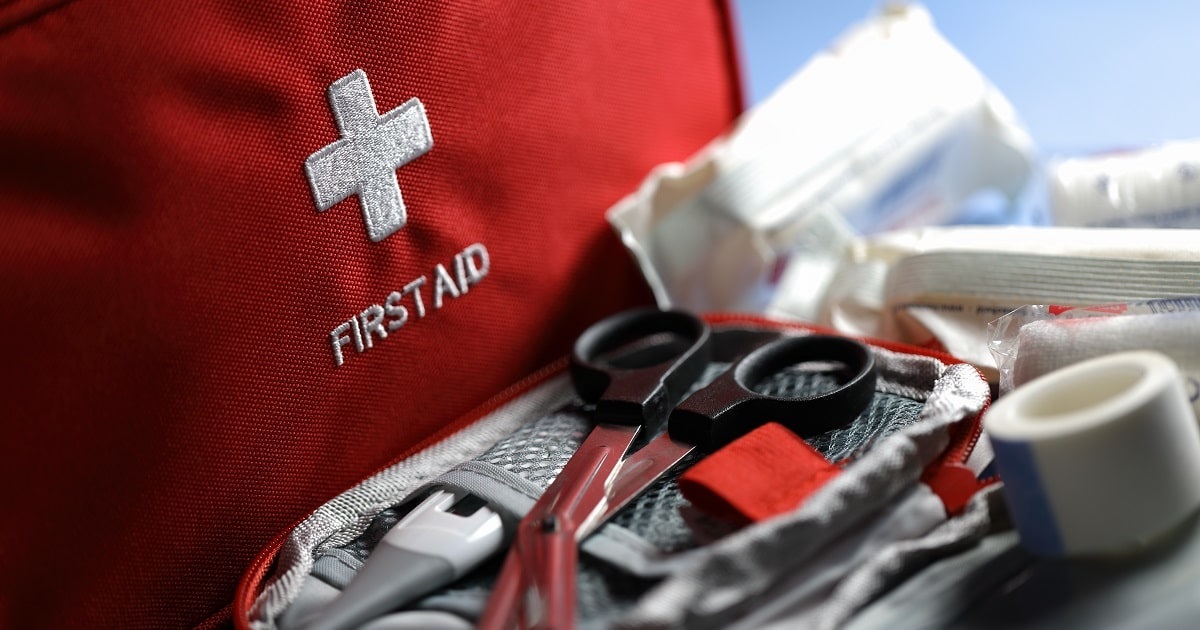Summary: Ensuring employees have basic knowledge of first aid and how to respond in an emergency is key to promoting a safe workplace. Learn more about OSHA’s first aid requirements, basic first aid procedures, and how to build well-equipped first aid kits for the workplace. First Aid in the Workplace: Is Your Business Prepared?
No matter how many safety precautions a business may have in place, workplace accidents can still occur. Injuries can be as minor as a paper cut or as serious as a broken limb, or worse. Along with injuries, employees may fall ill from chemicals in the air or from health conditions like high blood pressure or diabetes. No matter what injury or illness is involved, performing first aid promptly and correctly can not only help reduce the victim’s recovery time – it could also save their life.
OSHA First Aid Requirements for Employers

All employers should create a
workplace safety program to help lower the risk of accidents and injuries that occur on the job. Likewise, developing
safety rules and policies specific to the organization should be integrated into the employees’ daily work activities.
However, when an injury or illness does occur, the
OSHA First Aid standard (20 CFR 1920.151) requires employers to have trained first aid providers at workplaces of any size if there is no “infirmary, clinic, or hospital in near proximity to the workplace which is used for the treatment of all injured employees.” Additionally, OSHA standards also require training in cardiopulmonary resuscitation (CPR) because sudden cardiac arrest from asphyxiation, electrocution or exertion may occur on the premises. CPR may keep the victim alive until emergency medical services can arrive on the scene to provide professional care.
Many reputable organizations like the Red Cross or the local American Heart Association chapter offer first aid and CPR training. The cost per person is generally minimal, and standard training takes about eight hours to complete. Plus, some first aid trainings can be tailored to the business’s specific needs depending on the common hazards workers face daily.
OSHA states that a
workplace first aid program is part of the business’s comprehensive safety and health management system that includes four essential elements:
- Management leadership and employee involvement
- Worksite analysis
- Hazard prevention and control
- Safety and health training
Creating a workplace safety plan is also an essential step of OSHA requirements. Employers should take time to identify the specific risks facing their workers and then develop their workplace first aid program that can help minimize the injuries resulting from accidents and exposures. The first aid program should also ensure first aid supplies and equipment are available and easily accessible.
What are Basic First Aid Procedures?
After employees have undergone training, it’s important to update the workplace safety plan regularly. Workers trained in first aid or CPR should do refresher sessions as needed; employers should “test” them by asking how they would respond to certain emergencies.

According to the Red Cross, when an individual suffers an injury or illness, some common
first aid procedures include:
- Check the scene and determine the extent of the injuries or condition. Obtain consent to help the individual and use personal protective equipment (PPE) before assisting.
- If the individual is unresponsive, check for breathing, bleeding or other life-threatening conditions.
- If the individual doesn’t respond, appears to be gasping and not breathing, or has other obvious life-threatening conditions, call 911. If the employee is properly trained, they may start CPR for an individual who is not breathing. If the individual is responsive and fully awake, ask what symptoms they are experiencing and find out if they have any allergies or take any medications. Do not move the person if there may be a head, neck or spinal injury.
- Based on the level of training, provide the care needed, or call 911 for further assistance.
Hasty actions and decisions made in the heat of the moment may make many accidents and injuries in the workplace worse. Employees should be trained to stay calm, assess the situation, contact the individual in charge and do their best to help the injured or ill person.
10 Things Every First Aid Kit Should Be Equipped With
When there’s an emergency at the workplace, there will be no time to run out to get supplies. That’s why its vital businesses keep a well-equipped first aid kit on the premises. Employers can purchase
pre-filled first aid kits, but
per OSHA, they should make sure the kits contain the following items:
- Several different sizes of gauze pads and a package of gauze roller bandages
- Boxes of adhesive bandages in different shapes, including triangular bandages
- Sealed moistened towelettes to clean wounds
- Scissors and tweezers
- One blanket
- Adhesive tape and at least two elastic wraps
- Latex gloves
- Resuscitation equipment, including airway or pocket masks and resuscitation bags
- Splints
- Directions for requesting emergency service
Additionally, employers should consider the specific hazards their workers face and customize their first aid kits with other necessary items, such as eye wash solutions, salves for burns, etc.
Loss Control Services from AmTrust
Despite taking precautions and implementing a workplace safety program, accidents can still happen. The
Loss Control department at AmTrust can help your business assess the conditions, practices and processes of the workplace to help identify common hazards facing workers. It’s our goal to provide the right
safety resources and commercial property safeguards to ensure your small business thrives.
Contact us today to learn more.
This material is for informational purposes only and is not legal or business advice. Neither AmTrust Financial Services, Inc. nor any of its subsidiaries or affiliates represents or warrants that the information contained herein is appropriate or suitable for any specific business or legal purpose. Readers seeking resolution of specific questions should consult their business and/or legal advisors. Coverages may vary by location. Contact your local RSM for more information.